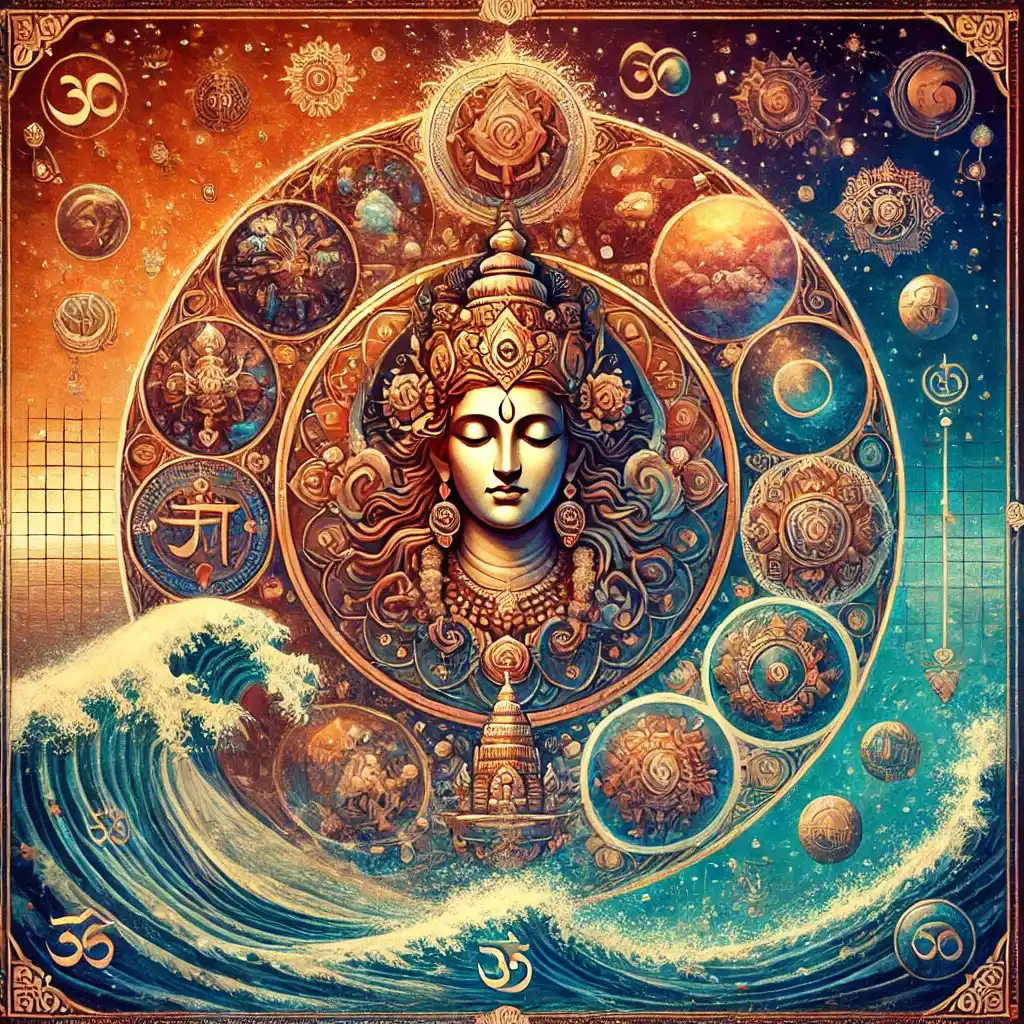
The Puranas
Vishnu Purana
A Detailed Exploration
The Vishnu Purana is one of the eighteen Mahapuranas, a genre of ancient Indian scriptures that are central to Hinduism. It is revered as one of the most important and authoritative texts in the Vaishnavism tradition, which focuses on the worship of Vishnu, the preserver and protector of the universe according to Hindu belief.
Overview and Structure
The Vishnu Purana is often considered the earliest of the Puranic texts, with scholars dating it to between the 1st and 4th centuries CE, although it could have been composed in stages over several centuries. The text is structured into six books or Amsas, each dealing with different aspects of cosmology, mythology, and theology, alongside discussions of ethics, law, and geography.
First Book (Amsa): The first book outlines the creation of the universe, the genealogies of the gods, sages, and kings, and the Manvantaras or cycles of creation. It also introduces the concept of the four Yugas (ages) - Satya, Treta, Dvapara, and Kali - which represent the cyclical nature of time in Hindu cosmology.
Second Book: This section focuses on the geography of the Earth, describing the seven continents, oceans, mountains, and rivers, as well as various regions like Jambudvipa, the central landmass in Hindu cosmology. It also discusses the duties of the four castes (Varnas) and the Ashramas (stages of life).
Third Book: The third book is largely theological, delving into the nature of Vishnu as the supreme deity. It discusses Vishnu's role in the preservation of the universe and the incarnations (Avatars) he has taken to protect righteousness, including famous avatars like Rama and Krishna. The Vishnu Purana also introduces the concept of Bhakti, or devotion, as a path to liberation (Moksha).
Fourth Book: The fourth book is historical and genealogical, providing detailed lists of dynasties, especially the Solar and Lunar dynasties, from which many of the heroes and kings in Hindu epics like the Ramayana and Mahabharata descend. It also describes the rule of King Bharata, after whom India is named (Bharatavarsha).
Fifth Book: This book is primarily focused on the life and exploits of Krishna, the most celebrated avatar of Vishnu. It narrates his childhood, his role in the Mahabharata, and his teachings in the Bhagavad Gita. Krishna’s life is portrayed as the perfect model of divine play (Lila), combining both the joys and challenges of life.
Sixth Book: The final book discusses the end times, known as the Kali Yuga, and the eventual destruction and renewal of the universe. It describes the future incarnation of Vishnu as Kalki, who will appear at the end of Kali Yuga to restore righteousness. The text ends with a description of the path to liberation through devotion to Vishnu.
Key Themes and Teachings
The Vishnu Purana emphasizes the concept of Dharma (duty/righteousness) and the role of Vishnu in maintaining the cosmic order. It highlights the importance of devotion (Bhakti) to Vishnu as the means to attain liberation from the cycle of birth and death. The text also integrates various philosophical teachings, including the Sankhya and Yoga philosophies, and emphasizes the unity of all creation under the supreme divine power of Vishnu.
Another significant theme is the concept of time and its cyclical nature. The Vishnu Purana elaborates on the four Yugas and the eventual destruction and renewal of the universe, reflecting the Hindu worldview of an eternal cycle of creation, preservation, and destruction.
Influence and Legacy
The Vishnu Purana has had a profound influence on Hindu religious practices, particularly in the Vaishnavism tradition. It is a source of many rituals, festivals, and practices associated with the worship of Vishnu and his avatars, especially Krishna. The text is also an important source for understanding the development of Hindu cosmology and mythology.
In addition to its religious significance, the Vishnu Purana has also contributed to the cultural and historical understanding of ancient India. Its genealogies and historical narratives provide valuable insights into the ancient dynasties and the socio-political landscape of early India.
Conclusion
The Vishnu Purana is not just a religious text but a comprehensive guide to understanding the universe, human life, and the divine. Its teachings continue to inspire millions of Hindus around

Explore the latest and most popular products available on Amazon, handpicked for your convenience! Whether you're shopping for tech gadgets, home essentials, fashion items, or something special, simply click the button below to view the product on Amazon. We’ve partnered with Amazon through their affiliate program, which means that if you make a purchase through this link, we may earn a small commission at no extra cost to you. This helps support our site and allows us to continue providing valuable content. Thank you for your support, and happy shopping!